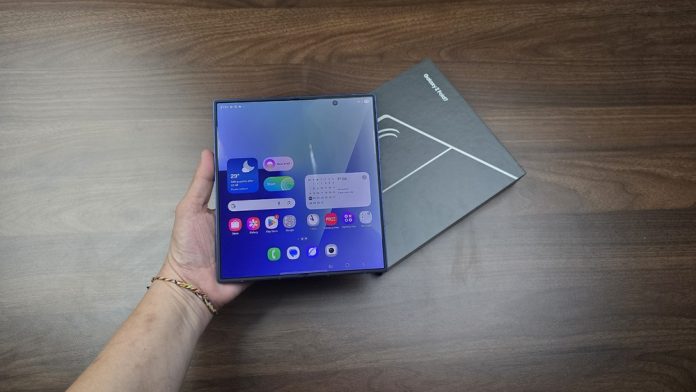The moment I held the Samsung Galaxy Z Fold 7, I could tell this wasn’t just another spec bump or annual refresh—it’s a carefully refined evolution of the foldable form factor. Samsung has been iterating on this design for years, and with the Z Fold 7, it finally feels like they’ve crossed the line between futuristic concept and mainstream practicality.

Design Refinement: Slimmer, Lighter, and More Practical
Physically, the Z Fold 7 is Samsung’s slimmest and lightest foldable to date. At just 8.9mm when folded and weighing 215g, it feels noticeably more manageable in hand. The clunky heft and awkward bulkiness of earlier Fold models are gone. The new Armor FlexHinge is not only thinner but also more durable, featuring a multi-rail structure that folds flatter and looks far more polished. The crease, while still there, is significantly reduced, and the entire build feels stronger—thanks in part to a titanium internal structure and updated Gorilla Glass protection. For the first time, this actually feels like a phone you can confidently use every day.
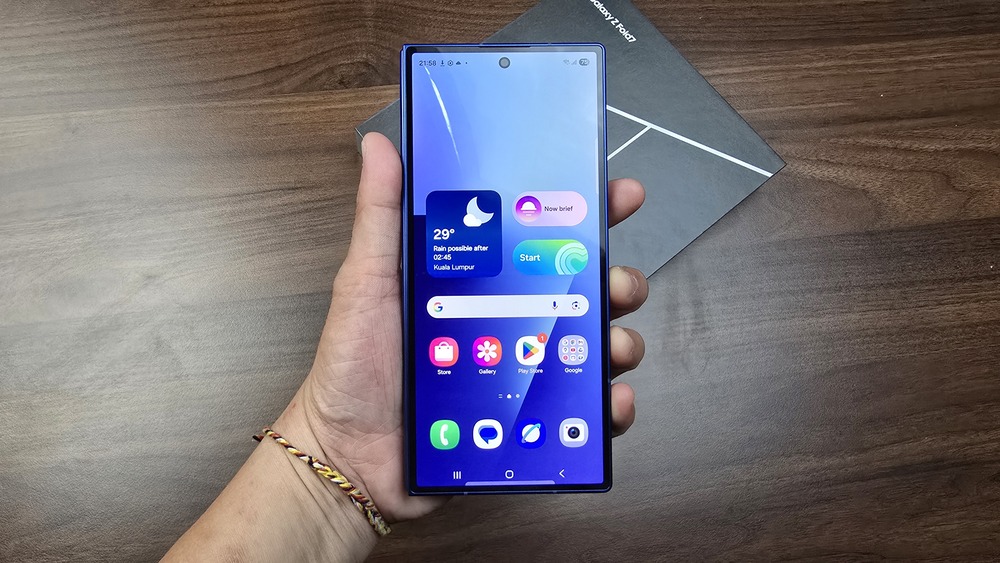
Display Upgrades: Brighter, Wider, and More Immersive
Open it up, and you’re greeted with a stunning 8-inch Dynamic AMOLED 2X display. It’s brighter than ever—reaching up to 2,600 nits—and everything from videos to multitasking apps look crisp and fluid thanks to the 120Hz adaptive refresh rate. The outer cover screen also sees a subtle but important upgrade: a wider 6.5-inch display with a more natural 21:9 aspect ratio. For texting, scrolling, and even taking calls, it no longer feels like you’re compromising between a tablet and a smartphone. This is the most natural-feeling Fold yet, both open and closed.
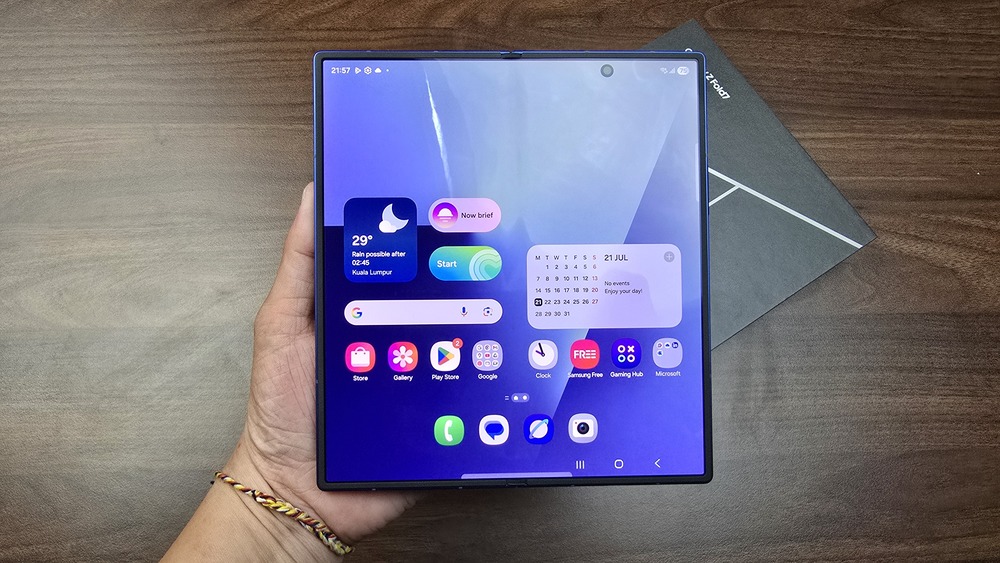
Performance & Galaxy AI: Not Just Smart—Intelligent
Under the hood, the Fold 7 is no slouch. It runs on the new Snapdragon 8 Gen 3 “Elite” for Galaxy chipset, paired with up to 16GB of RAM and 1TB of storage. Multitasking is seamless—whether you’re watching youtube, running multiple apps in split-screen, or taking notes. Where the device really flexes, though, is in the software. Samsung’s Galaxy AI suite is deeply integrated into One UI 8.0 (built on Android 16), and it’s not just fluff. From real-time language translation during calls, to AI-powered summarisation and image editing, the features feel thoughtful and integrated—not gimmicky.
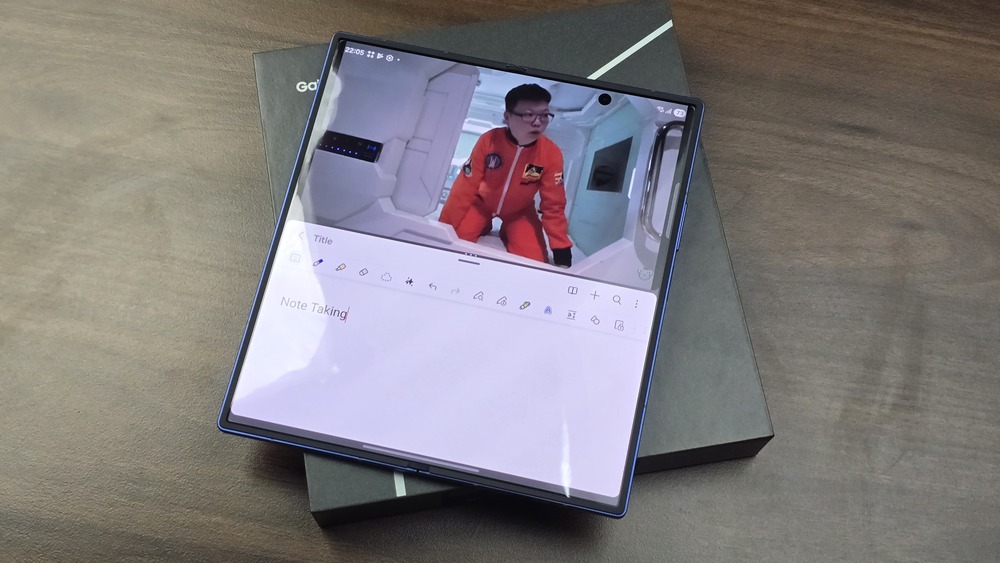
Camera System: Quietly Getting Better
Camera performance is another area where the Fold 7 quietly impresses. The main camera is now a 200MP shooter that delivers excellent detail and color, bolstered by solid ultra-wide and telephoto options. The 10MP selfie camera on the cover screen is sharp and clear, while the under-display camera inside has improved, though still not quite flagship-tier. It’s clear Samsung is closing the gap between the Fold and its S-series siblings in the photography department.
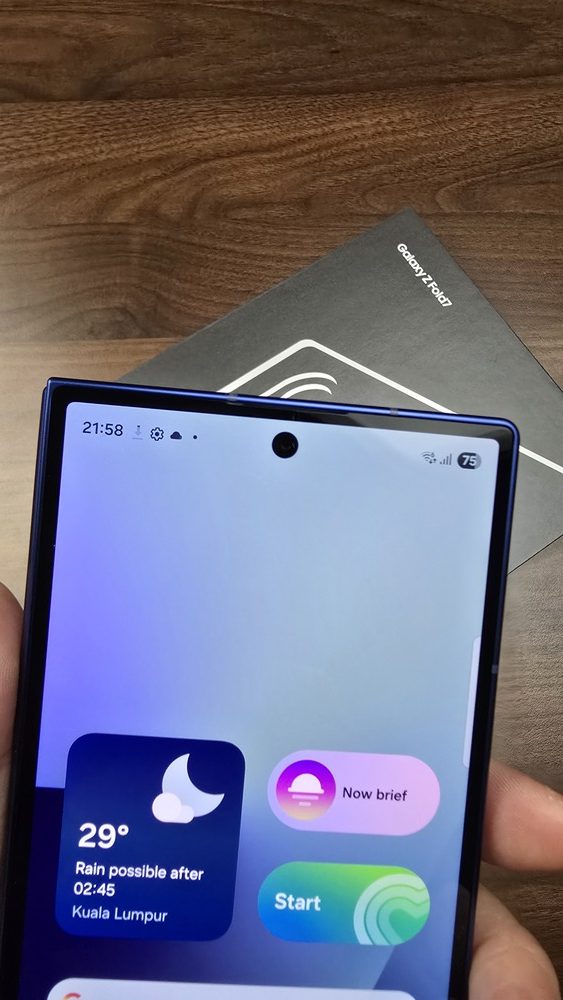
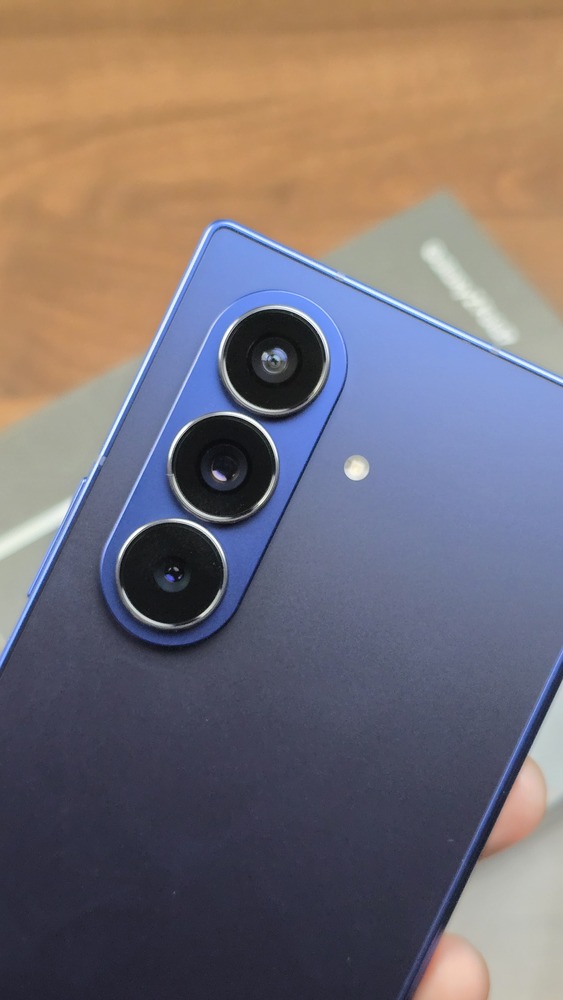
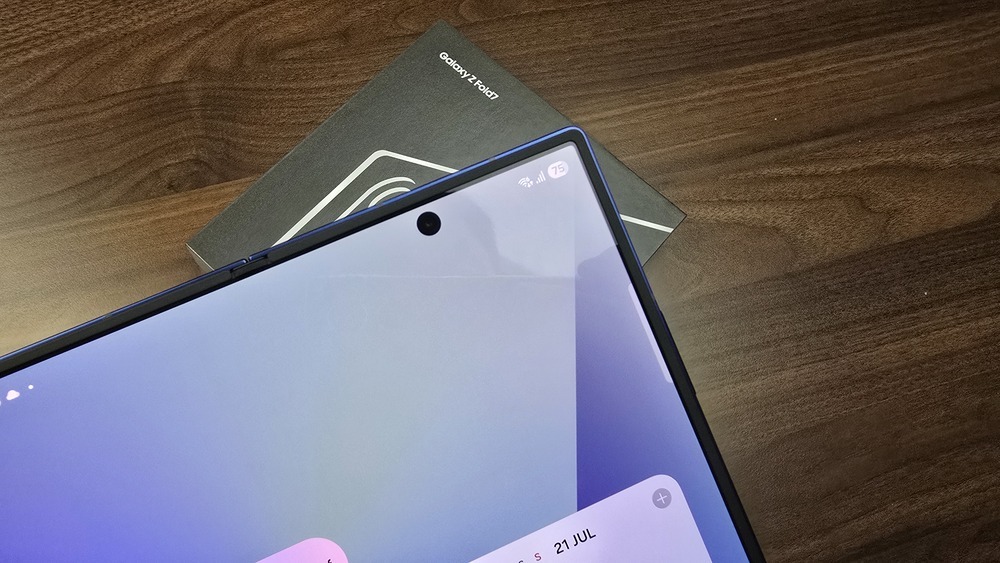
Battery and S Pen: Some Trade-Offs Remain
Samsung has retained the same 4,400mAh battery capacity as its predecessor, along with 25W wired charging, 15W wireless, and 4.5W reverse wireless charging. While software optimisations help, it’s still a full-day device at best—not quite enough for power users who expect more from a device this premium. Another surprise: Samsung has dropped S Pen support entirely, prioritising the thinner build over stylus compatibility. That’s a tough pill to swallow for digital artists and note-takers who found the Fold an ideal sketching platform.
If there’s one takeaway from my first impression of the Galaxy Z Fold 7, it’s that Samsung has finally delivered a foldable that feels finished. It’s sleek, functional, and beautiful to use—no longer a tech demo, but a serious contender for your everyday device. The Fold 7 isn’t just catching up to slab-style flagships—it’s quietly redefining what premium smartphones can be.
Is it perfect? Not yet. But if you’ve been on the fence about switching to a foldable, this is the closest Samsung has come to making a case that’s hard to argue with.

